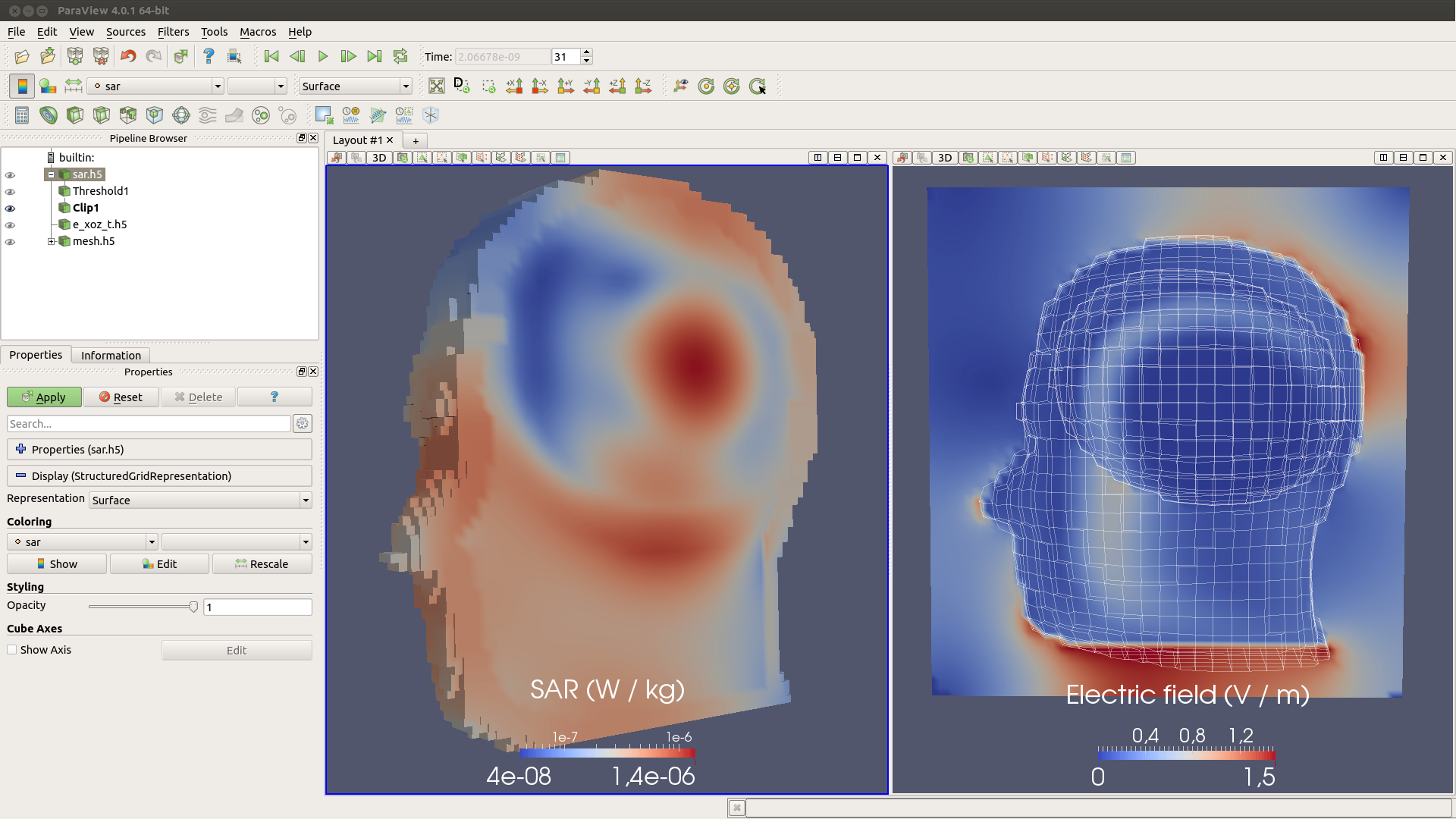

When fluid and solid data sets from CFD codes are O(100 GB), the use of distributed memory architectures is required for post-processing. As an example, one such simulation with 100,000 deformable spheres (each with 254 triangular surfaces) requires a LB fluid domain in excess of 2 billion lattice grid points. When computing the dynamics of 1,000’s to 100,000’s of deformable particles suspended in fluid, datasets can easily reach 1 terabyte or greater for a single simulation. Our approach has shown the ability to scale on as many as 65,536 computational cores of Argonne National Laboratory’s IBM Blue Gene/P. We have shown the ability to simulate thousands of deformable particles and capture non-Newtonian characteristics that agree well with experimental observations. An image of multiple clusters forming in Hagen-Poiseuille flow is shown below. The multiphase nature of the blood creates non-Newtonian flow effects, such as shear thinning, commonly observed in experiments. In our approach, the blood plasma and hemoglobin are treated as Newtonian fluids with viscosities of 1.2 and 6 cP, respectively. Simulations of blood at a cellular level provide a tool that allows exploration of the rheology, stress, and diffusion of individual suspended cells. In moderately-large-sized arteries, the nature of blood can be described as a macroscopic non-Newtonian fluid however, flow in smaller vessels requires treating human blood as a multiphase fluid containing 40-45% RBCs by volume. Red blood cells (RBCs), the most numerous constituent of blood, influence continuum-level measurements by altering the suspension at microscopic scales. The maximum viscosity and first normal stress difference is obtained when particles are aligned in a cluster along the compressional axis. The following figure demonstrates a novel problem where the particle microstructure affects the viscosity, normal stresses, and particle pressure of a suspension.
Paraview microstructure full#
Of particular interest are the particle pressure and a full characterization of normal stresses, which are difficult to measure experimentally. We examine the dynamics of deformable capsules and how these dynamics affect the rheology of dense suspensions using the LB-FE method. A recent review article highlights the feasibility of using the LB method for complex flows including suspension of deformable, particles, capsules and fibers. The LB-FE method resolves the fluid phase, both interior and exterior to the fluid-filled particles, with the LB method. This method, originally developed for rigid suspensions, was extended to deformable red blood cells (RBCs), particles, capsules and fibers. The raw data files are in dat format and can be opened for visualization using tools such as Paraview or Tecplot.Computational simulation of blood flow and dense suspensions of deformable particles is only possible on high performance computing resources using a highly scalable computational approach such as the hybrid lattice-Boltzmann / finite element (LB-FE) method. This dataset contains all the simulation results used for generating the figures of the manuscript titled "Prediction of microstructure evolution during binary alloy solidification" including raw simulation output files and processed data in spreadsheets. Data for manuscript: Prediction of microstructure evolution during binary alloy solidificationĭata Archiving and Networked Services (DANS)


 0 kommentar(er)
0 kommentar(er)
